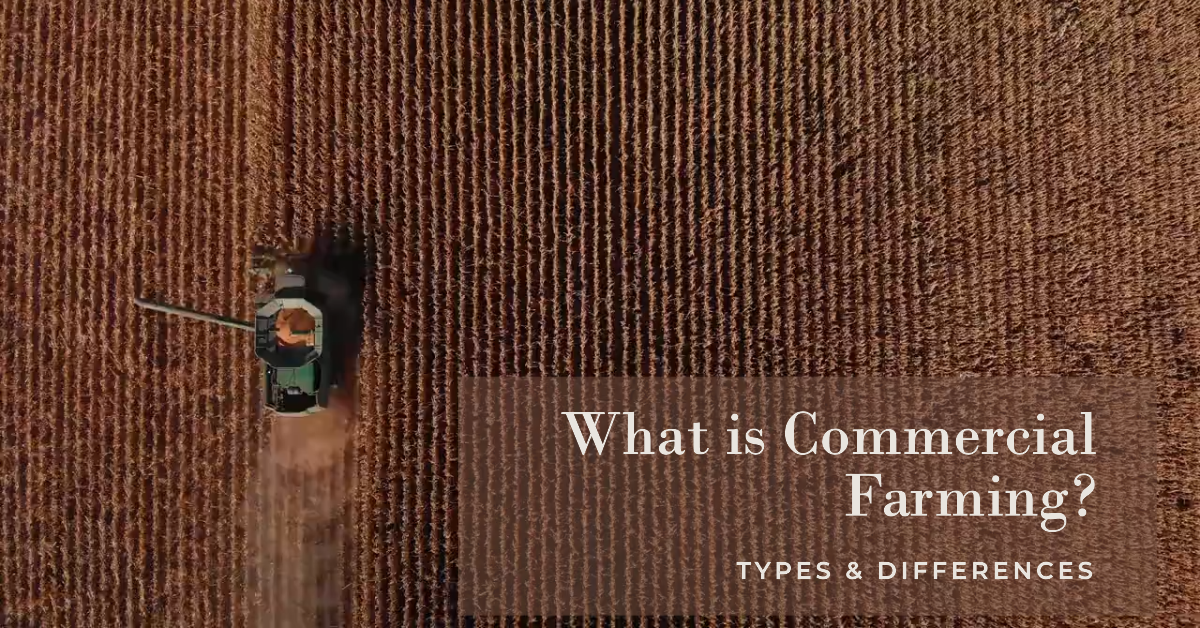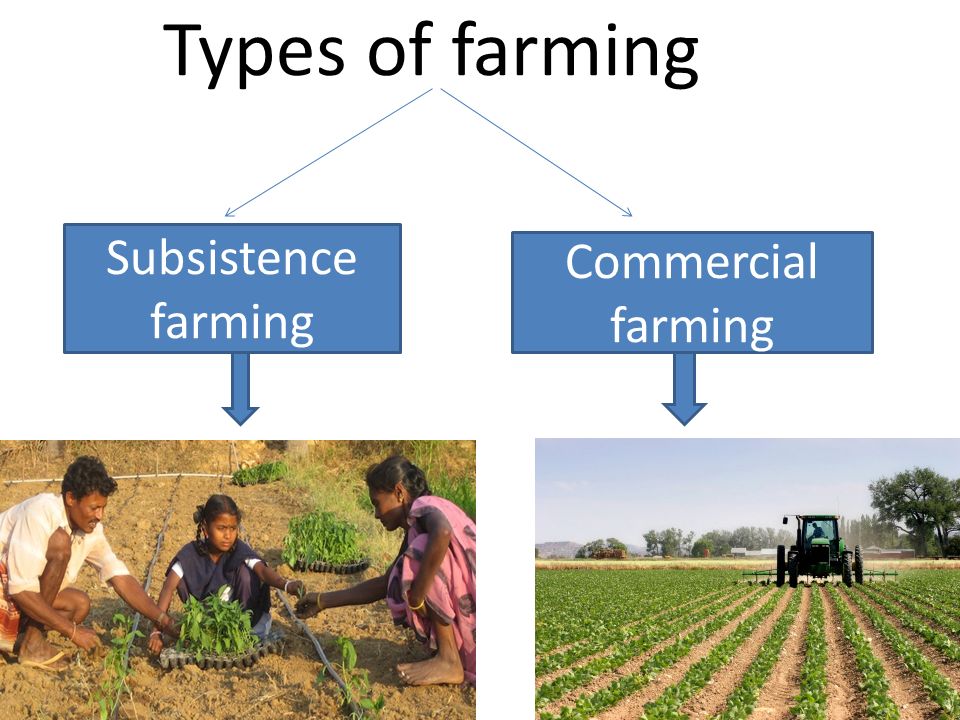Checking Out the Distinctions Between Commercial Farming and Subsistence Farming Practices
The dichotomy in between business and subsistence farming techniques is marked by varying objectives, operational ranges, and resource utilization, each with extensive effects for both the setting and culture. Conversely, subsistence farming highlights self-sufficiency, leveraging standard methods to maintain home demands while supporting community bonds and social heritage.
Economic Goals
Financial goals in farming practices typically dictate the techniques and range of operations. In commercial farming, the primary financial objective is to make best use of earnings. This requires a focus on effectiveness and efficiency, accomplished with innovative modern technologies, high-yield crop varieties, and extensive use of pesticides and plant foods. Farmers in this version are driven by market needs, intending to produce huge amounts of commodities for sale in worldwide and national markets. The focus is on attaining economies of range, making sure that the price each result is minimized, therefore raising earnings.
On the other hand, subsistence farming is predominantly oriented in the direction of meeting the immediate demands of the farmer's family members, with excess manufacturing being marginal. The economic purpose right here is commonly not make money maximization, but instead self-sufficiency and threat reduction. These farmers commonly run with minimal sources and count on typical farming strategies, tailored to regional environmental conditions. The key goal is to ensure food safety for the home, with any kind of excess produce offered locally to cover basic needs. While industrial farming is profit-driven, subsistence farming is focused around sustainability and resilience, reflecting a fundamentally different set of economic imperatives.

Range of Operations
The distinction in between industrial and subsistence farming ends up being especially obvious when thinking about the range of operations. Industrial farming is defined by its large nature, typically including extensive tracts of land and employing innovative machinery. These procedures are commonly incorporated right into international supply chains, producing large amounts of plants or animals intended offer for sale in global and domestic markets. The scale of industrial farming permits economic climates of scale, leading to minimized prices each via mass manufacturing, increased effectiveness, and the ability to purchase technological advancements.
In plain comparison, subsistence farming is typically small, focusing on producing simply sufficient food to satisfy the immediate demands of the farmer's family or neighborhood area. The land area included in subsistence farming is typically restricted, with much less access to modern-day innovation or mechanization.
Resource Usage
Source utilization in farming practices discloses substantial differences in between business and subsistence methods. Industrial farming, identified by massive operations, commonly uses advanced innovations and mechanization to optimize the usage of resources such as land, water, and fertilizers. These methods permit boosted performance and greater productivity. The focus gets on taking full advantage of outcomes by leveraging economies of range and releasing sources strategically to ensure constant supply and earnings. Accuracy agriculture is increasingly taken on in industrial click here for info farming, making use of data analytics and satellite technology to keep an eye on plant health and wellness and enhance resource application, more improving return and resource efficiency.
In contrast, subsistence farming operates a much smaller scale, primarily to meet the prompt needs of the farmer's house. commercial farming vs subsistence farming. Source usage in subsistence farming is often limited by economic restrictions and a dependence on traditional methods. Farmers normally make use of manual labor and all-natural resources available locally, such as rainwater and organic garden compost, to grow their plants. The focus gets on sustainability and self-reliance instead of making best use of output. Consequently, subsistence farmers may face challenges in resource management, consisting of minimal access to improved seeds, fertilizers, and irrigation, which can restrict their ability to enhance performance and profitability.
Ecological Influence

On the other hand, subsistence farming, practiced on a smaller sized range, normally utilizes conventional techniques that are more attuned to the surrounding setting. Plant rotation, website here intercropping, and natural fertilization prevail, promoting dirt health and wellness and minimizing the need for why not try these out synthetic inputs. While subsistence farming commonly has a lower environmental impact, it is not without challenges. Over-cultivation and inadequate land administration can bring about soil erosion and logging in some instances.
Social and Cultural Implications
Farming techniques are deeply intertwined with the social and social textile of communities, affecting and showing their values, traditions, and economic frameworks. In subsistence farming, the emphasis gets on cultivating sufficient food to fulfill the prompt needs of the farmer's family members, typically promoting a strong sense of area and shared obligation. Such methods are deeply rooted in neighborhood customs, with understanding passed down through generations, consequently maintaining cultural heritage and enhancing common connections.
Alternatively, business farming is largely driven by market demands and productivity, typically leading to a shift towards monocultures and large-scale procedures. This strategy can cause the disintegration of traditional farming methods and cultural identities, as local customs and expertise are replaced by standard, industrial approaches. The focus on performance and profit can often reduce the social communication located in subsistence neighborhoods, as financial transactions change community-based exchanges.
The duality between these farming practices highlights the broader social effects of agricultural choices. While subsistence farming sustains social connection and area connection, industrial farming straightens with globalization and financial growth, commonly at the cost of standard social frameworks and multiculturalism. commercial farming vs subsistence farming. Stabilizing these elements stays a critical challenge for lasting agricultural growth
Final Thought
The exam of business and subsistence farming practices exposes significant distinctions in objectives, scale, source usage, ecological influence, and social implications. Conversely, subsistence farming stresses self-sufficiency, making use of local resources and traditional techniques, therefore promoting cultural preservation and neighborhood communication.
The dichotomy in between business and subsistence farming practices is marked by differing objectives, operational scales, and resource application, each with profound effects for both the atmosphere and culture. While business farming is profit-driven, subsistence farming is focused around sustainability and resilience, reflecting a fundamentally different set of financial imperatives.
The difference in between industrial and subsistence farming ends up being especially noticeable when considering the scale of operations. While subsistence farming sustains cultural connection and neighborhood interdependence, business farming straightens with globalization and financial development, usually at the cost of conventional social frameworks and social variety.The evaluation of commercial and subsistence farming methods exposes considerable differences in goals, range, source usage, ecological effect, and social ramifications.